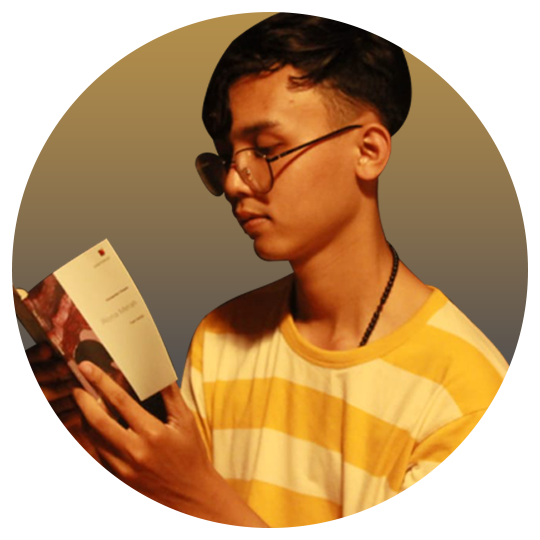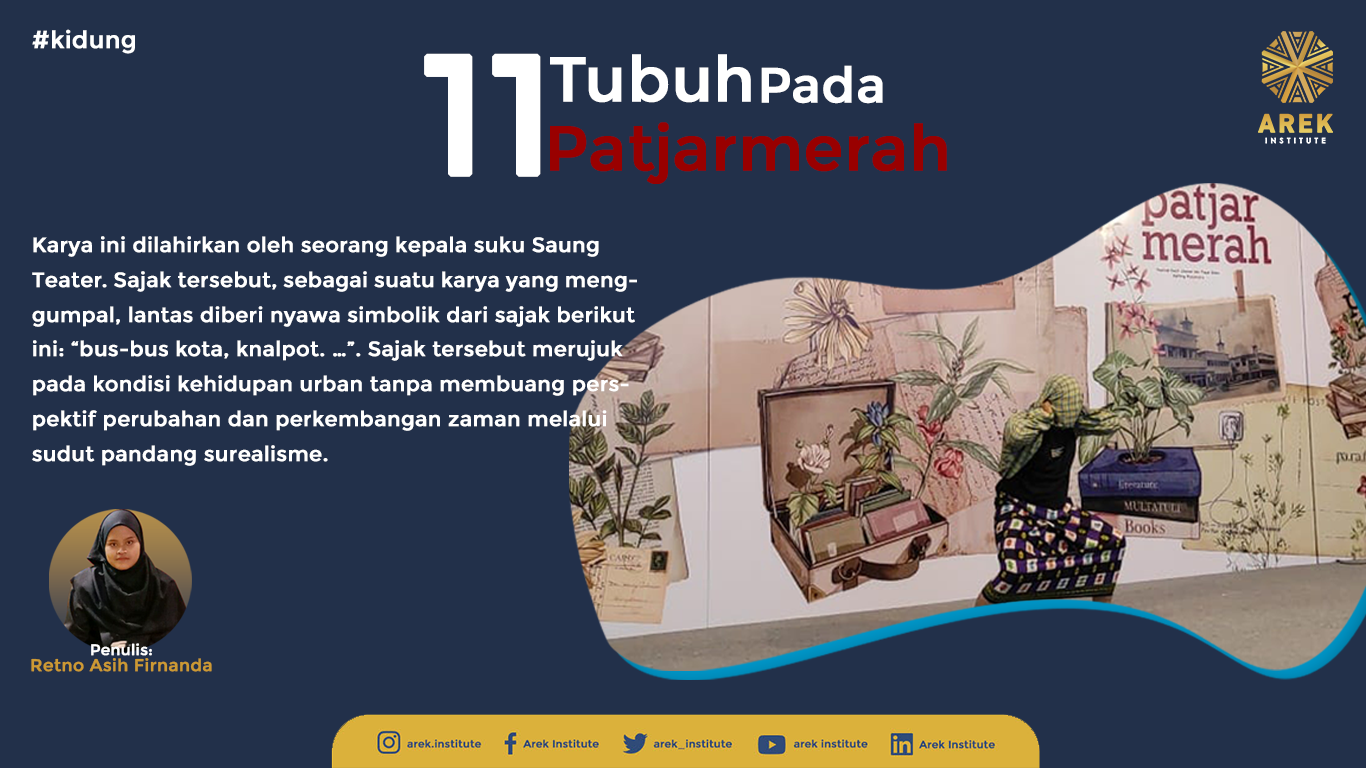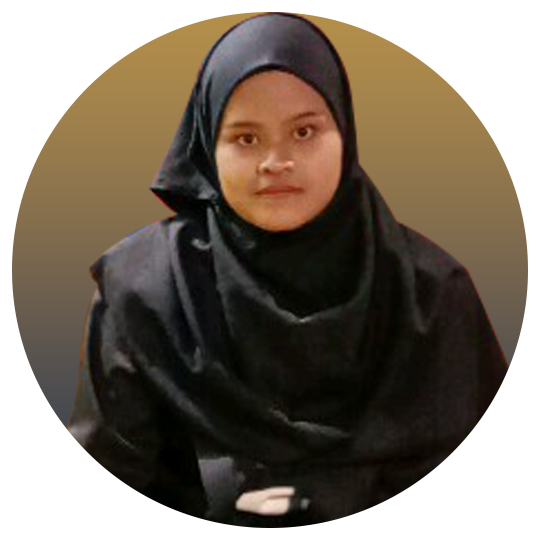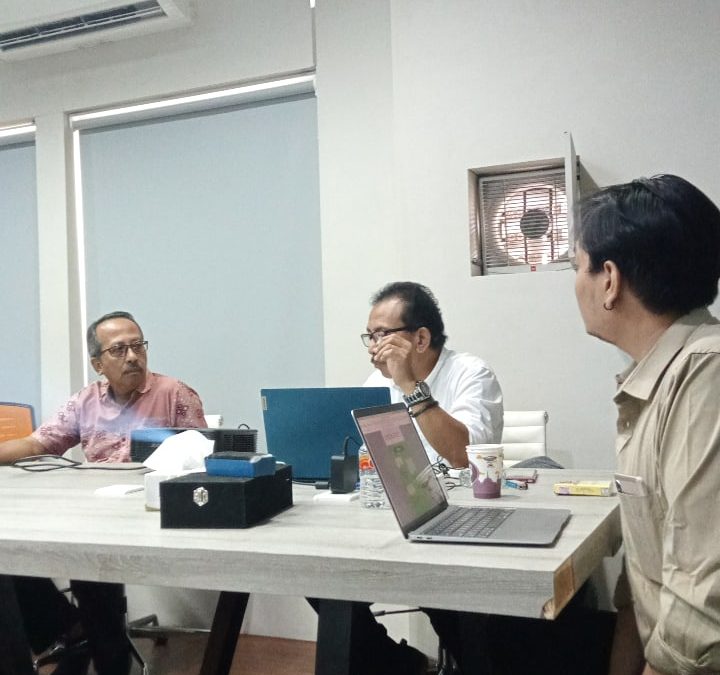
Maut Merah

Seperti anak-anak tahun 90an pada umumnya, ingatan masa kecilku dipenuhi oleh tayangan televisi yang menayangkan huru-hara. Beberapa tahun berlalu, tapi aku masih sanggup membayangkan bencana itu dengan jelas. Kadang ingatan mengenai tayangan itu sekelebat datang mengganggu lamunanku.
Dulu aku kerap menonton siaran sepak bola malam. Memperhatikan setiap gerak-gerik dari pemain dan memperagakannya di lapangan desa esok harinya. Atau juga menjadi komentator dadakan bersama bapak sembari menggunjing tim jagoan yang kebobolan.
Setidaknya, hal itu begitu menyenangkan bagi masa anak-anakku. Meski terkadang aku kerap bangun kesiangan, dan terkena sumpah serapah ibu sebab bolos sekolah. Aku menyukai masa lalu ini—sebelum maut biru merusak sepak bola dan masa anak-anakku.
Aku masih ingat betul, waktu Maut Merah terjadi. Selepas televisi menyiarkan peringatan-peringatan September kelam yang menurut bapak hanya seremonial belaka dan penuh tipu daya. Kami berdua memutuskan untuk melupakan teatrikal pertelevisian dengan menonton siaran sepak bola.
Seperti lalu-lalu, bapak akan menyeduh secangkir kopi hitam untuk melawan badai rasa kantuk yang menjemukkan. Sesekali, aku pun boleh menyeruput secangkir kopi agar tetap menemaninya begadang. Dengan syarat harus sembunyi-sembunyi dari ibu yang melarangku untuk meminum kopi.
Pertandingan selama sembilan puluh menit berjalan serasa begitu cepat. Kedua tim berbalas serang. Membuahkan hujan gol dalam suasana langit malam yang mendung. Satu gol dari tim tuan rumah langsung dibalas gol beruntun dari tim tamu. Begitu mengasyikkan sepak bola yang saling serang ini.
Berbeda dengan sepak bola Italia yang berfilosofi bertahan. Negara kami punya filosofi sepak bola yang menyerang dan mengandalkan kecepatan-kecepatan dari winger. Memang masih kalah jauh dengan Jogo Bonito dari legenda Brazil serupa Neymar dan Vini. Tapi kelihaian pemain kami di lapangan setidaknya jadi obat penangkal setelah Timnas tidak pernah lolos piala dunia.
Begitulah fakta yang terjadi saat itu. Obat kegagalan piala dunia, kami lampiaskan dalam liga sepak bola. Bahkan, bapak jauh lebih Spartan dari yellow wall untuk urusan mendukung tim jagoannya. Sepak bola notabene menjadi kepercayaan kedua setelah agama. Itu yang telah tertanam dalam hati seluruh supporter.
Kedatangan Maut Merah yang telah merusak kepercayaan supporter tak terkecuali bapak. Selepas pertandingan berakhir dengan kemenangan tim tamu, aku hanya dapat melihat asap tebal menyelimuti. Bukan dari kabut mendung atau flare. Siaran langsung terputus berselang beberapa menit kemudian.
Kami berdua pun memutuskan untuk langsung tidur setelah menghabiskan secangkir kopi. Tidur dengan rasa penasaran dan tanya yang belum terjawab.
“Mas, semalam terjadi ricuh. Tembak-tembakan di lapangan. Semuanya kalang kabut. Untung mas, untung, aku selamat.” ujar suara parau dari seorang lelaki.
Aku hanya dapat menguping dari balik tembok kamar tidur yang bersebelahan dengan ruang tamu. Tidak jelas kudengar perbincangan antara bapak dan lelaki tamunya. Sesekali nadanya parau. Tak jarang, ia menangis tersedu-sedu mengutarakan kejadian yang terjadi di dalam stadion.
Sekilas, seperti sebuah kepingan-kepingan yang kulihat dari televisi dan kudengar dari lelaki bersuara parau, stadion menjadi tempat eksekusi. Begitu pikiran sederhanaku menyimpulkan.
Perbincangan di ruang tamu sudah tidak terdengar, aku segera beranjak menemui bapak. Tamunya telah pamit pulang. Sementara, bapak terduduk dengan raut wajah yang tersedu-sedu. Hatinya pasti teriris mendengar peristiwa yang terjadi semalam.
“Memangnya apa yang sebenarnya terjadi di stadion semalam pak?” tanyaku spontan.
Bapak terkesiap melihatku. Tidak menyadari sebelumnya bahwa aku berada di sampingnya. Ia berdiri dan berjalan dengan langkah gontai.
“Tidak ada. Ini tragedi, Maut Merah.” jawabnya sambil beranjak.
Kejadian semalam menjadi tragedi kelam bagi sepak bola terutama untuk supporter seperti kami. Empat puluh hari berturut-turut bapak mengajakku ke stadion setiap sore. Dengan pakaian serba hitam, kami menaburkan bunga di hadapan patung Singa lalu memanjatkan doa.
“Ada ratusan nyawa yang belum diadili disini.” ucap bapak sambil mengelus kepalaku.
Aku memandang bapak yang terisak. Uban telah tumbuh di sekitar rambutnya, jiwa mudanya tak bergema seperti beberapa tahun lalu. Kejadian sore itu tidak akan pernah luput dari ingatanku. Semenjak saat itu, aku jadi tau mengenai tragedi Maut Merah.
Setelah empat puluh hari berselang, kami rutin mengunjungi patung singa—yang dikeramatkan—setiap seminggu sekali di hari Sabtu.
“Kenapa kita tetap datang kemari pak?”
“Kita datang untuk menuntut keadilan. Sampai keadilan itu benar-benar datang.”
Ucapan bapak saat itu benar-benar membuatku bingung.
Setahun berselang, kuketahui lelaki—yang datang ke rumah selepas tragedi Maut Merah—meninggal dunia. Bapak benar-benar terpukul mengenai kabar duka itu. Tanpa sepengetahuanku, bapak lebih sering mengunjungi stadion.
Delapan tahun berlalu begitu cepat. Seperti tragedi yang sudah-sudah, Maut Merah pun cepat dilupakan oleh pengadil. Aku baru saja menuntaskan studi di Yogyakarta. Melupakan kebiasaan hari Sabtu bersama bapak mengunjungi stadion, menaburkan bunga di patung singa, serta memanjatkan doa.
Begitu pula dengan sepak bola. Membicarakan sepak bola di sini membuatku ingin muntah. Permasalahan-permasalahan yang terus menghantui selama beberapa dekade tak kunjung selesai. Para pengurus yang hanya ingin memalak antusias kami para supporter. Mirip sosok preman di terminal.
“Bapakmu masih kerap mengunjungi stadion.” ungkap ibu saat meneleponku.
Air mataku berlinang. Terbayang langkah bapak yang ringkih menyusur jalanan dan berdiri menahan rasa dingin dari hujan yang menggigilkan tubuhnya. Secepat kabar yang sampai, aku memutuskan untuk pulang setelah mengetahui bapak mempunyai flek hitam pada paru-parunya.
Selama perawatan yang mengharuskan bapak bolak-balik rumah sakit, aku menggantikan kebiasannya berkunjung ke stadion. Kebiasaan Sabtu sore yang sudah lama aku tanggalkan. Kadang terbersit dalam benakku, mengapa bapak begitu kekeh datang ke stadion dan melakukan upaya tuntutan menurutku.
Maut Merah memang sejarah kelam sepak bola. Negeri ini kerap menutut rapat kekelaman dalam sejarah peradaban mereka. Lantas apa yang perlu diadili dan ditegakkan. Keengganan selalu muncul ketika aku ingin menyampaikan ini pada bapak. Mungkin bapak masih mempercayai keadilan. Mungkin.
Duka yang mendalam tak lama aku alami. Bapak wafat karena tak sanggup menghadapi flek hitam di paru-parunya. Hari-hari yang hampa kulalui dengan melakukan apa yang biasanya bapak lalui, berkunjung ke stadion. Tanpa digerakkan oleh apapun, aku mengunjungi stadion.
Bukan keadilan yang aku tuntut, tapi aku merasa harus melanjutkan perjuangan bapak. Begitu Sabtu soreku seterusnya kuhabiskan. Kini aku semakin sering datang ke stadion di lain hari Sabtu.
Terutama semenjak berkenalan dengan Laila. Perempuan berambut ikal yang begitu menarik perhatianku. Ia sekitar lima tahun jauh lebih tua, dan matanya mempunyai sorot yang tajam.
Kami bertemu di suatu sore yang mendung dengan nuansa terasa begitu canggung ketika kami pertama berkenalan. Suasana jauh lebih cair setelah kami sering berjumpa.
“Kamu tidak merasa bosan mencari keadilan?” tanyaku.
Ia termangu memejamkan mata yang mirip dengan bunga Tulip yang kuncup itu sejenak.
“Tragedi tidak butuh keadilan, tapi pertanggung jawaban.” ucapannya tegas.
Suasana mendadak menjadi hening.
“Aku kemari untuk berduka. Ratusan orang tak bersalah telah kehilangannya,”
“Tak terkecuali pacarku.” suaranya kini bertambah berat.
Ia membuka satu kancing kemeja hitamnya. Aku terperanjat melihat luka yang berada di bagian dada kirinya. “Aku diselamatkan oleh pacarku,” imbuhnya.
Kepalaku mendadak begitu pusing, aku ingin memuntahkan isi perutku. Terdengar jelas teriakan dan isak tangis yang tidak sempat disiarkan dulu. Suara-suara yang telah dibungkam sampai sekarang. Aku jatuh lunglai, pak.







